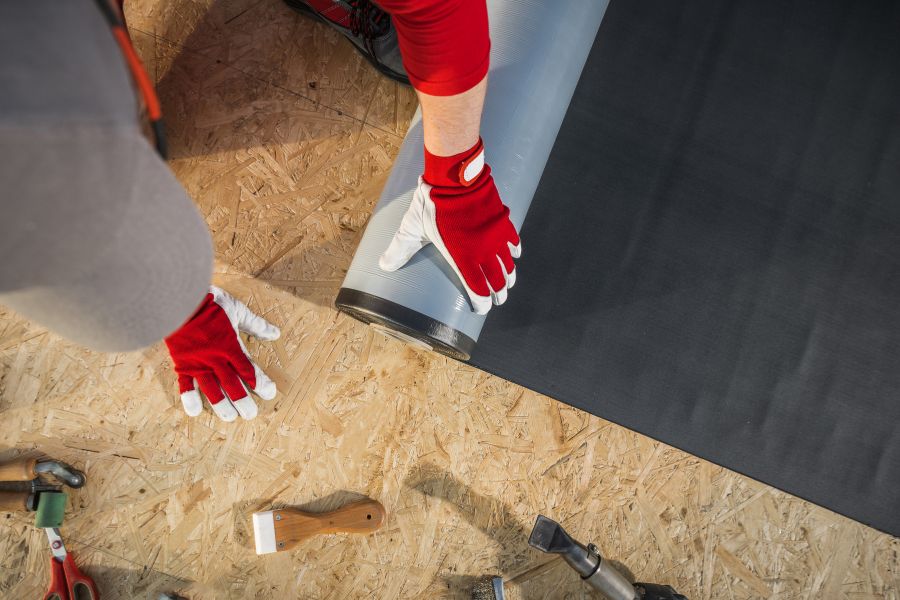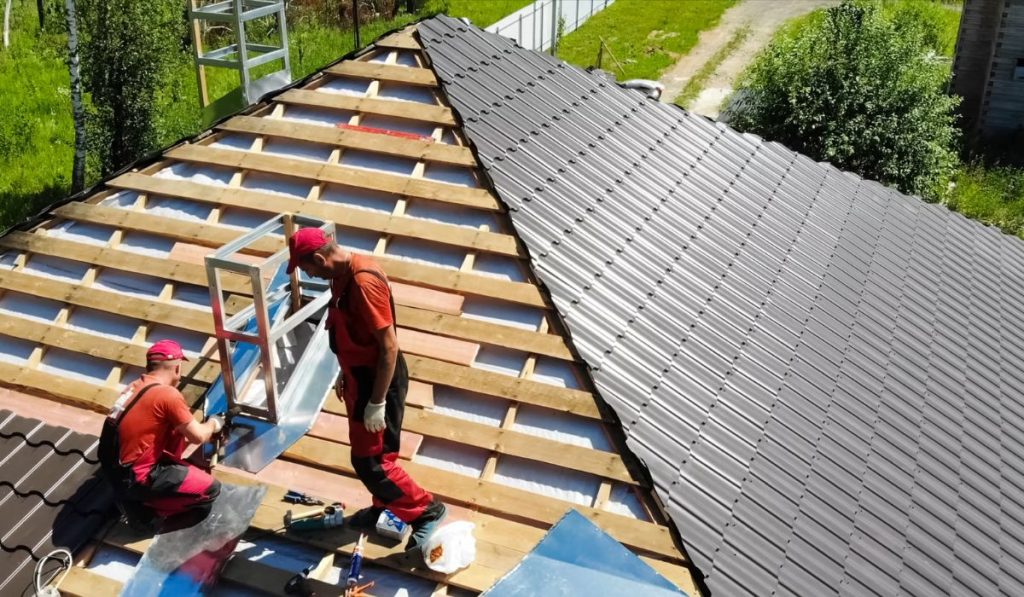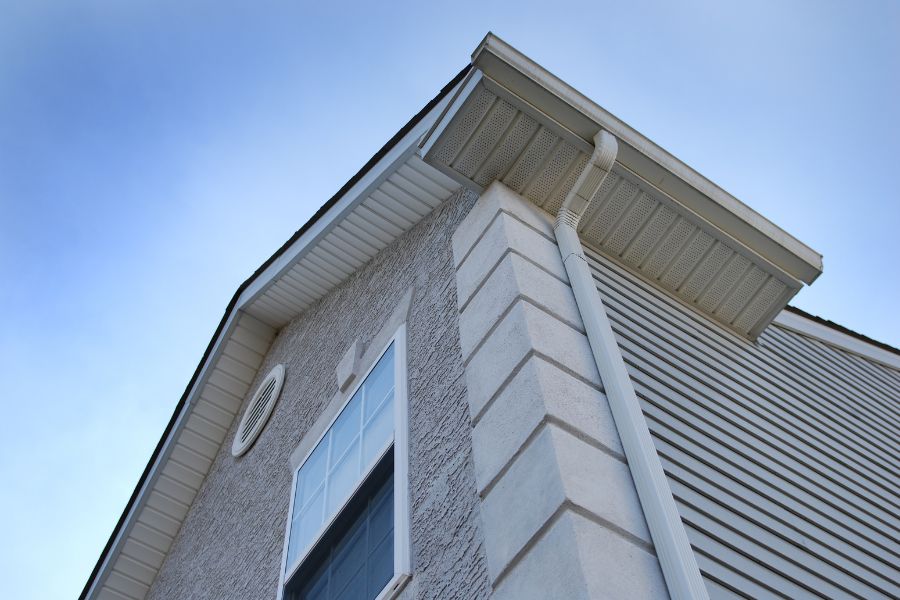Understanding the Landscape of DIY Roof Repair
In recent years, the surge of do-it-yourself projects has extended to practical home maintenance tasks, with roof repair being one of the more challenging yet appealing options for many homeowners. As a resident of Oklahoma City, you might find the idea of saving money and achieving a personal sense of accomplishment incredibly appealing. However, before you embark on such a venture, it’s crucial to understand both the benefits and the risks involved – especially the often-overlooked DIY roof repair risks.
The roofing structure of your home is one of its most critical components. Not only does it protect the interior from the elements, but it also ensures the structural integrity and overall energy efficiency of your property. In Oklahoma City, where weather conditions can be unpredictable with intense storms and high winds, ensuring that your roof is in top-notch condition is essential. DIY projects can sometimes provide a temporary solution. However, these projects come with their own set of challenges that can potentially escalate if not approached with proper care and understanding.
The purpose of this detailed guide is to explore every facet of DIY roof repair from evaluating cost-effectiveness to understanding inherent risks, like safety hazards and potential worsening of damage over time. Whether you are a seasoned DIY enthusiast or a novice homeowner, the in-depth analysis presented here will help you make informed decisions about whether to proceed on your own or to call a professional roofing contractor, such as those at OKC Roofers.
Key Benefits of DIY Roof Repair
DIY roof repair projects can offer several enticing advantages, the foremost being the potential for significant cost savings. Many homeowners are drawn to the idea of handling roof repairs themselves as it eliminates labor costs associated with hiring professional roofers. This benefit, however, should be balanced against the potential DIY roof repair risks, which can sometimes lead to more expensive repairs down the road if not managed properly.
Another appeal of managing your own roof repair is the flexibility and sense of accomplishment. By taking on the challenge yourself, you gain hands-on experience in home maintenance, which can be empowering and build long-term confidence in addressing other property-related projects. The DIY approach also allows for immediate action. In events where a leak or damage is noticed, having the skills to make a temporary fix while scheduling a professional repair later can prevent further damage.
Additionally, the modern availability of instructional videos, online guides, and community forums provides a wealth of resources that make it easier to grasp the necessary techniques and safety measures. These resources can demystify complex repairs and assist you in avoiding common pitfalls that might result in additional damage or injury.
However, as beneficial as these aspects may be, undertaking a DIY project also means juggling a steep learning curve. Without adequate experience and equipment, a well-intentioned repair can quickly spiral into a more significant problem. This is where understanding the DIY roof repair risks becomes paramount.
Recognizing the Risks Involved in DIY Roof Repair
The allure of DIY projects is undeniable, but when it comes to your roof, the stakes are high. DIY roof repair risks extend beyond simple financial setbacks; they encompass a wide range of potential hazards, including serious injury, long-term damage to your home, and even legal issues. One of the principal risks is the safety element. Climbing on a sloped surface, handling heavy materials, or working at heights without proper safety gear poses significant dangers.
Many homeowners underestimate the complexity of roof repair tasks. For example, mishandling tools or using insufficient materials can lead to improper sealing and further deterioration of the roof. In Oklahoma City, where severe weather such as tornadoes and heavy rains can amplify the fragility of roofing structures, even a minor error in repair can result in catastrophic damage. The risk of falling or heat-related injuries also cannot be overlooked, making it essential to evaluate your capabilities realistically.
Another considerable risk is the lack of standardization in DIY repairs. Professional roofers bring years of experience, knowledge about local building codes, and access to high-quality materials, all of which contribute to the durability and integrity of a repair. Any deviation from these standards can result in improper installation, leading to leaks, water damage, and a reduced lifespan of your roof. Furthermore, if preventative measures or timely repairs are neglected, the problem can escalate, resulting in even more expensive and extensive repairs or replacement.
It’s also important to consider the implications for your home’s insurance. Many policies have specific clauses regarding DIY repairs. An improperly executed repair might void your insurance coverage, leaving you vulnerable to significant financial loss if further damage occurs. In essence, while fixing your roof on your own might seem appealing from a cost perspective, the potential financial implications of any mistakes can far outweigh the initial savings.
Evaluating When DIY is Feasible vs. Seeking Professional Help
Deciding whether to undertake a DIY roof repair or to call a professional is a pivotal decision that involves weighing your skill level against the complexity of the task at hand. In Oklahoma City, where weather conditions demand resilient Roofing solutions, the decision takes on even greater significance. One must recognize that not all roof repair issues are created equal; some damages are minor and may be safely fixed with a DIY approach, whereas others require specialized expertise and equipment.
For instance, routine maintenance tasks—such as replacing a few shingles or clearing debris from gutters—might be appropriate for a determined homeowner. However, it’s important to remember that neglecting such tasks can reduce the lifespan of gutters, leading to more costly repairs down the line. On the other hand, significant issues such as widespread roof leakage, extensive storm damage, or structural deterioration often require professional intervention. Moreover, professionals have a keen understanding of the latest industry standards, local building codes, and innovative repair techniques that can prevent further damage.
Safety is another crucial factor in making this decision. Professional contractors are trained to handle hazardous conditions, use specialized equipment, and abide by strict safety protocols. Even experienced DIY enthusiasts may find themselves limited by physical constraints or unsuitable weather conditions, which dramatically increase the risks involved. Recognizing your limitations is not a failure—it’s a strategic decision that protects your safety and your family’s well-being.
When weighing the feasibility of a DIY approach, it is wise to assess the potential cost savings against the risk of future expenses. A poorly executed repair can lead to recurring problems or even void existing warranties on roofing materials. An honest evaluation of your abilities, the condition of your roof, and the complexity of the repairs required is essential. Sometimes, the added cost of professional help can be seen as a worthwhile investment that ensures reliability, safety, and peace of mind in the long run.
Financial Considerations and the True Cost of DIY Roof Repairs
One of the most compelling reasons to attempt DIY roof repair is the prospect of saving money by avoiding labor fees. However, the financial implications of DIY roof repair risks warrant a closer look. At first glance, tackling the project yourself can seem like a cost-effective strategy, but the hidden expenses can sometimes add up quickly if the repair is not executed properly. It’s vital to perform a detailed cost-benefit analysis that considers both short-term savings and long-term impacts.
When budgeting for a DIY roof repair, remember that the expenses aren’t limited to the materials needed for the repair. You may also need to invest in specialized tools and safety gear, all of which add to the overall cost. In situations where mistakes are made, you may have to pay for additional materials and possibly even professional repair services to correct any errors, further reducing the anticipated savings. Moreover, any deterioration that escalates due to an improper repair could result in claims to your insurance company, which might lead to higher future premiums.
For many homeowners, the feeling of self-reliance and saving a significant amount of money is indeed fulfilling. However, it’s essential to look beyond the immediate financial benefits to the long-term value of your home. Professional repairs typically come with warranties or guarantees that are not available with DIY work, ensuring that the initial investment is secured against future incidents. Ultimately, even a modest transfer of labor to a professional contractor, such as those at OKC Roofers, might save you money in the long run by preventing the cascade of costs associated with recurring issues.
The decision to pursue a DIY repair should be informed by a thorough analysis of all these financial considerations. If the potential savings cannot confidently outweigh the risks of needing further repair or experiencing structural failure, seeking professional help might represent a better investment. Homeowners must remember that their roof is a long-term investment in the safety and functionality of their home—and sometimes, it is worth spending a little extra for guaranteed quality.
Tools, Techniques, and Best Practices for Successful DIY Roof Repair
If you decide to move forward with a DIY roof repair, having the right set of tools and a clear understanding of the techniques involved is non-negotiable. There is a multitude of specialized tools designed to improve safety and enhance the efficiency of roof repair tasks. For instance, secure ladders, safety harnesses, and proper roofing nails and sealants form the core toolkit for any amateur roofer. Investing in quality tools not only facilitates the repair process but also mitigates many of the DIY roof repair risks.
Along with the proper tools, adopting proven techniques and best practices is crucial to ensuring a successful repair. One of the primary practices is to start with a comprehensive inspection of your roof before engaging in any repairs. This will allow you to identify all the areas that need attention, ensuring that you do not miss any critical spots that could lead to leaks or further damage. Documenting these issues with photos and written notes can help you develop a systematic repair plan.
It is equally important to familiarize yourself with the roofing materials involved. Whether you’re dealing with asphalt shingles, metal roofing, or another type of material, each requires a specific method of installation and repair. Researching manufacturer recommendations and local experts’ advice will guide you in selecting the right repair methods and products designed to perform robustly under Oklahoma City’s weather conditions.
Other best practices include working with a partner whenever possible, so that there is always someone available to assist or call for help in case of an emergency. Furthermore, it is important to avoid working in adverse weather conditions. Excessive heat, rain, or high winds can significantly increase the risks associated with roof repair projects. Detailed planning, including scheduling work around favorable weather forecasts and ensuring that you have all necessary supplies on hand before beginning, is a critical aspect of executing a successful DIY repair project.
Safety Precautions and Necessary Preparations for DIY Roof Repair
When it comes to roof repair, safety is the most crucial component, transcending both the DIY appeal and cost-saving motives. Many of the DIY roof repair risks can be significantly minimized with careful planning and the right safety measures. Preparing adequately before commencing any repair work on your roof is indispensable, as the potential for falls or other accidents is ever-present.
At OKC Roofers, we emphasize that your safety should always come before the completion of a project. We also provide roofing in Newcastle to help the residents.
Safety begins with understanding the limitations of your own skills and equipment. Ensure that you have the appropriate safety gear, such as non-slip footwear, hard hats, and a harness system, especially when working on steep roofs. Before stepping onto the roof, check that your ladder is stable and set on firm ground. Many accidents occur due to poorly set equipment or attempting repairs on a wet or unstable surface. You must also ensure that someone is aware of your work schedule so they can offer assistance or call emergency services if necessary.
Another essential precaution is to remain aware of the weather. In Oklahoma City, weather conditions can change rapidly, potentially increasing the risk of slips, falls, or heat stroke during extended repair sessions. Always monitor local weather forecasts and postpone any work if adverse conditions are expected. Additionally, create a plan for managing any hazardous materials or debris that may result from the repair process. Keeping your work area organized is vital to preventing accidents and ensuring an effective, safe repair job.
Finally, do not hesitate to consult safety guidelines published by trusted organizations. There are numerous resources available from home improvement networks and local roofing associations that provide step-by-step instructions and safety recommendations specifically tailored for DIY roof repair projects. These guidelines not only help reduce immediate risks but also contribute to a safer environment that protects your home and personal well-being.
Case Studies: Lessons Learned in DIY Roof Repair
Real-life examples can offer invaluable insight into the successes and pitfalls of DIY roof repair. Over the years, numerous homeowners have bravely ventured into DIY roof repair, with experiences ranging from remarkably successful fixes to costly misadventures. By examining these case studies, you can better understand the practical implications of DIY roof repair risks and learn essential strategies to avoid common mistakes.
One notable case involved a homeowner in suburban Oklahoma City who attempted to repair damaged shingles following a severe storm. Although the project started with an optimistic outlook, the lack of proper preparation and the use of substandard materials led to repeated leaks. Eventually, the escalating water damage necessitated a complete roof replacement, far exceeding the initial repair costs. This mistake underscored the importance of proper planning, quality materials, and acknowledging when a repair job is too advanced for a DIY approach.
In another instance, a different homeowner took advantage of detailed online tutorials and local workshops before attempting small repairs. With the proper safety gear and realistic expectations, this individual managed to successfully replace a few damaged shingles without further complications or injury. This case highlights that when approached with care, caution, and some professional guidance, even significant repairs can be successfully managed in a DIY context.
These contrasting experiences emphasize that the success of a DIY roof repair project heavily depends on an honest assessment of your own abilities, preparedness, and adherence to established best practices. While the enthusiasm to tackle a project alone is commendable, these lessons serve as a reminder that even minor oversights can escalate into major issues, reinforcing the importance of considering professional help when necessary.
Pro Tips from OKC Roofers
Pro Tip #1: Prioritize Safety With the Right Gear
Before you begin any repair work, invest in high-quality safety gear. A fall from a roof can be catastrophic, so ensure that you have non-slip footwear, a sturdy helmet, and a reliable harness. Remember, your personal safety should always come first, and using the correct tools can greatly reduce the DIY roof repair risks associated with working at heights.
Pro Tip #2: Know When to Call a Professional
Even experienced DIY enthusiasts must recognize their limitations. If you encounter structural issues, widespread damage, or find the repair process overwhelming, don’t hesitate to contact professional roofers. This not only ensures quality workmanship but also prevents additional financial and safety risks that can escalate from minor errors.
Pro Tip #3: Plan Thoroughly and Use Quality Materials
Map out your repair project in detail before starting. Assess the damage, gather all necessary materials, and ensure they meet industry standards. Quality materials paired with a meticulous repair plan can minimize the DIY roof repair risks and extend your roof’s lifespan. A little extra preparation can make all the difference in achieving a lasting, durable repair.
In conclusion, the decision to pursue DIY roof repair is one that every homeowner in Oklahoma City should weigh carefully. This guide has explored both the appealing benefits and the significant risks related to DIY roof repair risks, including cost factors, safety hazards, and the technical skills needed to achieve a successful repair. By evaluating your personal capabilities, undertaking thorough preparations, and knowing when to seek professional help, you can safeguard your home and investment. Whether you choose a DIY approach for minor repairs or call the experts at OKC Roofers for complex projects, being informed and cautious is paramount. Ultimately, the key to a successful roofing project lies in a balanced approach that aligns your needs with the safest, most effective repair strategy.





